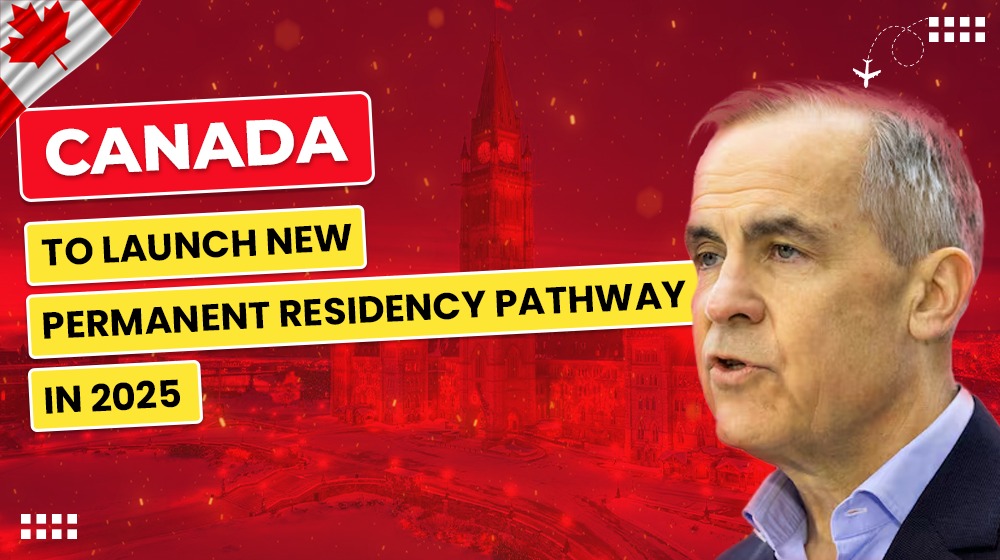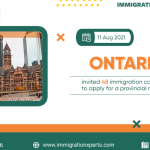
Canada To Launch New Permanent Residency Pathway in 2025
In a landmark move aimed at addressing labour market shortages and modernizing its immigration system, Canada is set to introduce a new Permanent Residency (PR) pathway in 2025. This new initiative, announced by Immigration, Refugees and Citizenship Canada (IRCC), is designed to provide more accessible and targeted opportunities for skilled professionals, international graduates, and essential workers seeking to make Canada their permanent home.
What Is the New PR Pathway?
The new PR pathway, officially titled the "Canada Integrated Skills Immigration Pathway (CISIP)", is part of a broader 2025 immigration reform strategy. It focuses on aligning immigration with national and regional labour market needs, particularly in high-demand sectors such as:
- Healthcare and elder care
- Information technology (IT) and artificial intelligence (AI)
- Engineering and green energy
- Skilled trades and construction
- Agri-food and hospitality services
The CISIP will operate under a streamlined, points-based system similar to Express Entry but with additional flexibility for provinces, territories, and designated employers to nominate candidates based on real-time economic demands.
Key Features of the New PR Pathway
Sector-Specific Invitations
Candidates will be invited through occupation-specific rounds focused on labour shortages, enhancing Canada’s ability to meet urgent workforce demands.
Employer-Driven Nomination Option
Designated Canadian employers can directly nominate foreign workers with in-demand skill sets, fast-tracking their PR application under CISIP.
Regional Prioritization
Special consideration will be given to applicants willing to work and settle in rural or economically developing regions through partnerships with Provincial Nominee Programs (PNPs).
Simplified Application Process
The new pathway will feature a digital-first application system, offering faster processing times (as quick as 4–6 months) and greater transparency.
Eligibility for International Graduates
Graduates from recognized Canadian institutions with job offers in priority sectors will have exclusive access to tailored CISIP streams.
Why Canada Is Launching This PR Pathway Now
With an aging population and record-high job vacancies in critical sectors, Canada is facing increased pressure to attract and retain global talent. The new PR pathway is part of Canada’s Immigration Levels Plan 2025–2027, which aims to welcome over 1.5 million newcomers in the next three years.
Immigration Minister Marc Miller stated,
"This new pathway is not just about bringing in people—it’s about building communities, addressing skill shortages, and driving Canada's economy forward in the long term."
Who Will Benefit from the CISIP?
This PR pathway is expected to benefit:
- Skilled foreign workers with experience in high-demand occupations
- Temporary foreign workers and caregivers currently employed in Canada
- International graduates with Canadian degrees and work experience
- Applicants with provincial or employer nominations
- French-speaking candidates looking to settle outside Quebec
How to Prepare for the New Pathway
Immigration experts recommend that prospective applicants:
- Evaluate Their Eligibility: Review NOC codes and demand lists for priority sectors.
- Enhance Their CRS Profile: Improve language scores, gain relevant work experience, and secure job offers if possible.
- Monitor PNP and Employer Programs: Stay updated with provincial immigration updates and employer nomination opportunities.
- Consult a Certified Immigration Consultant: For guidance on documentation, timelines, and eligibility pathways.
Timeline & Launch Date
The CISIP is expected to launch officially in Fall 2025, with pilot invitations beginning as early as September. IRCC will release a detailed application guide and eligibility criteria by August 2025.
Conclusion:
The launch of Canada's new Permanent Residency pathway in 2025 marks a major shift in how the country approaches skilled immigration. By focusing on labour market alignment, regional needs, and modern processing systems, this new initiative promises to create faster, fairer, and more targeted opportunities for immigrants who are ready to contribute to Canada’s future.
For millions of aspiring immigrants around the world, 2025 could be the perfect year to begin the journey to becoming a permanent resident of Canada.





